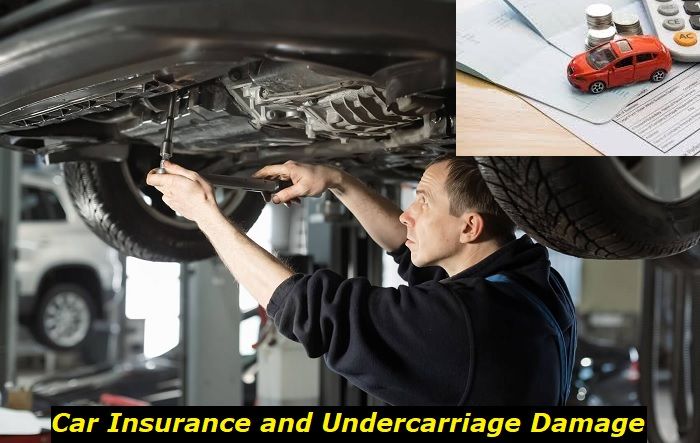The 2022 Chevrolet Silverado 5.3L V8 L82/L84 engine is known for its strength, durability, and reliability. However, like other engines, common problems and complications can crop up after a particular mileage. In this article, we'll cover the engine specifications and the most common problems Chevy truck owners experience.

Key features and my opinion about the engine
- Production years:2019-now
- Average lifespan of L82/L84:240,000-280,000 miles
- Fuel supply type:direct injection
- Power range:355 hp
- Fuel efficiency:bad
- Engine block material:aluminum
- Engine reliability score:high
- The most common problems:oil consumption, cooling system problems, head gasket failure, AFM/DFM problems.
What's the Difference between the 2022 Chevrolet Silverado Lineups?
There are two lineups of the Chevloret 2022 Silverado: 1500 and 1500LTD. The 1500 LTD acts as an interim model between the 2021 and 2022 models. The 1500 version comes with significant updates and changes, such as an upgraded infotainment consisting of a 13.4-inch touch screen, a forward collision warning safety feature, a supercruise hands-free driving system, a restyled front end, new off-road trim, and a new interior design.
The 5.3 Liters Eco Tech 3 V8 Engine Specifications and Performance
The Chevy's 5.3 liters V8 L82/L84 engine combines robust performance, a long lifespan, and an efficient fuel economy suitable for any adventure you partake in. It consists of the fifth generation of small-block aluminum V8 truck engines that made a debut in 2014.
With a horsepower of 355 and 383-pound feet of torque, it ranks high in engine performance. From the 10-speed automatic transmission, you'll get a smooth shift in transmission as it utilizes low-end torque. It also boasts a high hauling ability with a towing capacity of up to 11500 pounds.
The engine has features such as cylinder deactivation, variable valve timing, and piston heads modified for direct injections. To ensure it delivers high pressure at high engine speeds and runs efficiently at lower rpm, it features an oiling system with dual pressure control.
You can also get fuel economy from Chevy's 5.3 liters V8 engine due to its dynamic fuel management feature that allows the engine to run in up to 17 patterns between 2 and 8 cylinders. This is based on the engine's demand and enhances power efficiency and delivery.
For optimal and uniform combustion, the spark plug is located close to the center of the combustion chamber. The 5.3 EcoTec3 also uses Active Fuel Management technology-a feature that deactivates four cylinders under light loads to improve fuel economy. The engine is E85 flex-fuel capable. With a quick responsive Oxygen sensor, a direct fuel injection, and close coupled catalytic converters, it also does well to reduce hydrocarbon emissions.
Other Engine Options of the Silverado 1500
Apart from the 5.3L v8 Eco Tec 3, the new Chevrolet Silverado 1500 has another range of three engine options to choose from, depending on your needs. They are:
- 6.2-Liter Ecotec 3 V8 Engine
It's the strongest and quickest of the engines in the lineup, boasting a maximum of 420 horsepower and 460-pound feet of torque. It has a ten-speed automatic transmission and a maximum towing ability of 13300 pounds.
- 2.7-Liter Turbo Engine
The engine has an automatic start or stop capabilities and generates 310 horsepower and a torque of 420 pound-feet. The towing capacity of the truck's engine is about 9500 pounds.
- 3.0-Liter Duramax Turbo Diesel Engine
The engine delivers 310 horsepower and 460 pound-feet of torque.
Engine Issues Facing the 5.3-liter V8 2022 Chevy Silverado
1) A Faulty Fuel Injection System
The modern 5.3 EcoTec3 engines use the direct fuel injector system as opposed to the older Vortec 5300 engines that use a port injection system. Direct fuel injection means a direct spray of fuel into the engine cylinders. This brings about an optimum fuel economy since the system effectively controls the fuel in the cylinders.
However, the system has a flaw where the fuel injectors are exposed to high pressure(1500+ psi) and temperatures in the combustion chamber.
The fuel injectors run the risk of wear and tear due to extreme temperatures and pressure. The gasoline injectors usually fail in an open or closed position. When they fail in the closed position, there's little to no gasoline injected into the combustion chamber.
In contrast, excess gasoline enters the engine if it fails in an open position. A faulty injector affects the engine's performance and is expensive and difficult to replace.
Symptoms of a failing fuel injector:
- Rough idling.
- Cylinder misfires.
- Lean or rich air-fuel mixture.
- Check engine light that comes on with specific cylinder misfire codes
2) Active Fuel Management Problem
Active fuel management is a valuable technology to improve fuel economy. On active fuel management, the engine runs on four cylinders, half the total number of cylinders. Observe the dashboard MPG screen, where you'll see the V4 icon flash to determine whether the active fuel management system is running.
You'll see a V8 icon flash if the system is off. But it also comes with many problems, such as excessive oil consumption and failing of lifters. It also leads to PCV valve clogging, which results from oil accumulation on the valve covers.
The issues with the technology were present in the previous 5.3L Vortec engines(which caused the engines to be discontinued in 2013)and are still creeping into the newer 5.3L EcoTec3 engines, although fewer. This could be a result of GM failing to pinpoint the exact reason behind the issues that arose from the technology.
Symptoms of a failing Active Fuel Management:
- Performance decline, stumbling, and sluggishness.
- Engine misfiring.
- The buildup of sludge.
3) Buildup of Carbon
With a 5.3L Ecotec 3, the carbon buildup becomes noticeable after around the 70000-mile range. As opposed to the Vortec engine which uses port injection- where high-pressure gasoline runs through the intake port into the cylinders- the Ecotec 3 engines use direct injection, where there's no high-pressure flow of fuel.
High-pressure fuel flow helps to clean any gunk or carbon buildup in the intake ports. The lack of pressure in Eco tec 3 engines leads to gunk buildup on the inside of the intake manifold and the valves. The buildup can later cause engine complications.
How to Solve Carbon Buildup?
You can clean the 5.3 Ecotec 3 engine via Walnut blasting. Walnut blasting refers to using a high-pressure air system to blast finely ground walnut shells on engine components such as valves and intake manifolds. The walnuts are a perfect fit for cleaning since they are biodegradable, soft, and can't destroy engine components. Another way to solve the carbon buildup issue is to use an oil catch can.
The oil catch collects used oil to prevent it from moving to the engine and clogging the valves. Another option is to regularly spray the intake manifold and valves using a GDI intake valve cleaner. This slows down the carbon buildup.
Symptoms of Carbon Buildup in the Engine:
- Lean air-fuel mixture ratio.
- Power decline.
- Reduced acceleration.
- Engine misfires.
- Rough idling.
4) Coolant Loss
Coolant loss can result from a cracked cylinder head (seals the top of a cylinder). It's often confused with a blown head gasket since the symptoms are similar. A cracked cylinder head can cause coolant leakage into the combustion chamber. This can lead to damage and pitting of the engine block. White smoke and a sweet smell can also come from your car's tailpipe. It can also cause a coolant and oil mixup.
Symptoms of a Coolant loss:
- Overheating of the engine
- The engine running rough and misfiring
- A drop in coolant level.
- Warning lights such as check engine light, engine overtemperature light, and low coolant level light may come on.
5) Problems with Gasket and Intake Manifold
With the 5.3L V8 Chevy engines with high mileage, leaks and cracks can develop in the gasket and intake manifold. This is due to the constant exposure to extreme fluctuations in temperature and pressure. The gaskets vulnerable to deterioration include an oil pan gasket, intake manifold gasket, and valve cover gaskets. The affected parts need replacement to extend the engine life.
Symptoms of Gasket and Intake Manifold Issues:
- Cracked gasket or intake manifold.
- Power loss and stuttering of the engine
- Rough idle.
6) Fuel Pressure Regulator Failure
A failure of the engine regulator can have the engine operating inefficiently or even cause the engine not to start. The fuel pressure regulator is a crucial engine component that regulates the amount of gasoline sent to the fuel injectors found in direct injection engines. Its regulation of fuel depends on the engine's needs. For instance, an accelerating car may require more fuel than a slow cruise.
Symptoms of a failing fuel pressure regulator:
- Engine misfires.
- Reduction in engine power and poor acceleration.
- Black smoke from the exhaust.
- Excess noise coming from the fuel pump.
- Fouled spark plug, which appears black.
7) Faulty 4wd Transfer Case Position Sensor Selector Switch
A common issue with vehicles with the L82/L84 engine is a failing transfer case sensor. The sensor switches from two-wheel to four-wheel drive mode and vice versa. It does this by signaling the power transfer from the engine to the front and rear wheels. A failing transfer case position sensor switch can have your vehicle stuck in either four-wheel drive mode or two-wheel drive mode.
Symptoms of a failing transfer case sensor switch:
- Experiencing noise and difficulty while shifting gears.
- 4wd service light illuminating on the dashboard.
Bottom Line
There you go. All the specs and common engine problems you need to know about the 5.3L V8 EcoTec3 engine.
About the authors
The CarAraC research team is composed of seasoned auto mechanics and automotive industry professionals, including individuals with advanced degrees and certifications in their field. Our team members boast prestigious credentials, reflecting their extensive knowledge and skills. These qualifications include: IMI: Institute of the Motor Industry, ASE-Certified Master Automobile Technicians; Coventry University, Graduate of MA in Automotive Journalism; Politecnico di Torino, Italy, MS Automotive Engineering; Ss. Cyril and Methodius University in Skopje, Mechanical University in Skopje; TOC Automotive College; DHA Suffa University, Department of Mechanical Engineering






Add comment